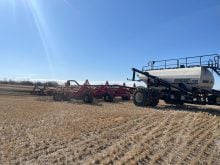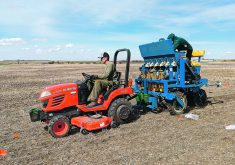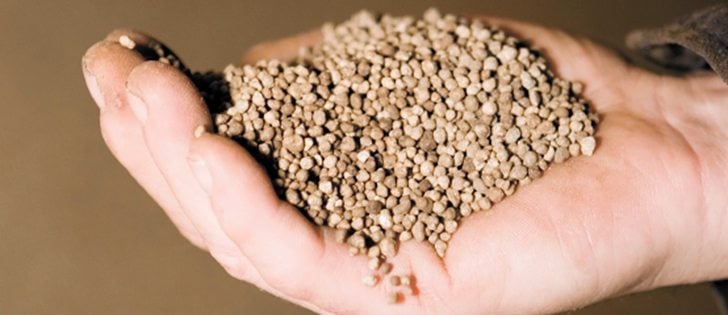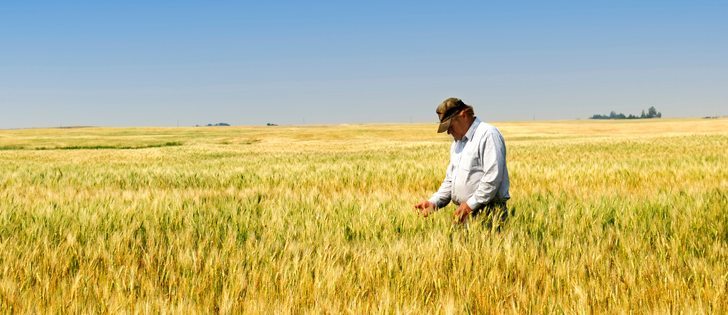Half of sulfur remains in the straw in the field after harvest and returns to the soil as the residue breaks down
No-till production methods have boosted soil organic carbon levels and increased the soil’s nutrient supplying capacity, including its ability to supply sulfur to prairie crops.
University of Saskatchewan soil scientist Jeff Schoenau said during a presentation at a recent farm show in Saskatoon that only about half of sulfur used by the crop is removed with the grain. The rest is contained in the straw.
As the plant residue is incorporated into the soil, sulfur is made available to the new crop as the old crop material breaks down.
Read Also

Growing garlic by the thousands in Manitoba
Grower holds a planting party day every fall as a crowd gathers to help put 28,000 plants, and sometimes more, into theground
“Highly sulfur deficient soils are much less common now than they were a few years ago, and I think that really reflects that we are building up soil sulfur supplying power.”
To help describe why having a balanced nutrition program is important, Schoenau mentioned Liebig’s law, which states that growth is not controlled by the total amount of resources available, but by the scarcest resource.
“When we talk about maximizing fertilizer nutrient benefit, that is getting a big bang out of all the fertilizer dollars we spend, of course we can’t just focus solely on one nutrient like nitrogen. We also need to be thinking about other nutrients like sulfur and phosphorus.”
Sulfur is especially important for brassica crops like mustard and canola, although it can also be in the fertilizer recommendations for cereal and pulse crops under conditions of high deficiency.
A 70 bushel per acre canola crop requires 200 pounds per acre of nitrogen, 120 lb. per acre of phosphorus, 180 lb. per acre of potassium, and 40 lb. per acre of sulfur, Schoenau said.
Plant roots absorb sulfur in the form of sulfate, but there are different fertilizer sulfur sources and forms available to growers.
Of the soluble forms of sulfur, ammonium sulfate is the best known but potassium sulfate is in that category as well.
These sulfur forms are available to plants as soon as applied.
Slightly soluble sulfur forms, like calcium sulfate, convert to plant available forms shortly after application.
Elemental sulfur must be oxidized by the environment to create a sulfur that plants can use
There are also the liquid forms of sulfur fertilizer, such as ammonium thiosulfate, which oxidize rapidly to sulfate and plant roots can use them soon after application.
Sulfur in the sulfate form is mobile in the soil, and so doesn’t have to be seed placed.
The best place for ammonium sulfate is away from the seed in band, Schoenau said.
“Sulfate is mobile. If forced to choose between sulfur or phosphorus in the seed row, go with phosphorus.”
Crops have varying tolerances to seed placed sulfur, and there are even differences in tolerance between varieties of the same crop. For instance, Schoenau said juncea and Polish canola types are more sensitive to injury from seed placed fertilizer than Argentine.
Ten to 20 lb. per acre of seed-placed ammonium sulfate is OK for canola on loamy textured, neutral pH soils, but under non-ideal conditions, producers should be more conservative with their seed-placed sulfur rates.
“Watch for injury on dry sandy and high pH soils, (they have a) high potential for ammonia injury. Injury has been documented as low as 10 lb. an acre for sulfur, where the ammonium contributes to harming the plant’s emergence,” Schoenau said.
Injury potential for liquid formulations of ammonium thiosulfate depends on how far away from the seed it is placed.
The soluble sulfate and thiosulfate fertilizers result in large amounts of sulfate in the fertilizer band. Most is taken up by the crops within the first three weeks.
Slightly soluble sulfate forms like gypsum are effective in maintaining concentrations in the zone in which they are placed. These are a good fertilizer source for wet conditions, where there is a high potential of the sulfate to leech down below the root zone, Schoenau said.
Broadcasting ammonium sulfate can work quite well, as it is much less susceptible to volatilization losses compared to urea. However, it has become less common because of regulatory reasons.
“Its a reasonably efficient application method, probably not effective as precisely placed in the soil in a band, but not bad,” he said.
“Generally oxidation rates are higher when the soils are moist and warm, and soils where there is lots of organic matter and lots of biological activity,” Schoenau said.
Very low levels of oxidation will occur in the spring, especially when fertilizer is placed in cold soils and in a dry band.
Elemental fertilizer is the one fertilizer that tends to work best when it’s broadcasted on the surface and allowed to weather, because it maximizes the opportunity for the sulfur oxidizing micro-organism to colonize the surface and carry out the oxidization, Schoenau said.
Elemental sulfur applied in the fall is often not exposed to many warm and moist days, which will limit the amount of oxidation it undergoes.
Contact robin.booker@producer.com


















